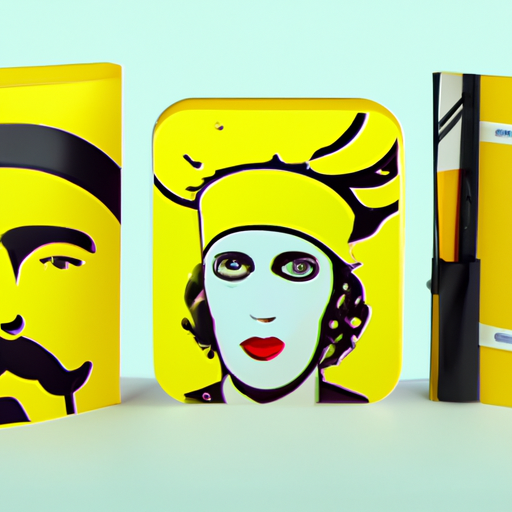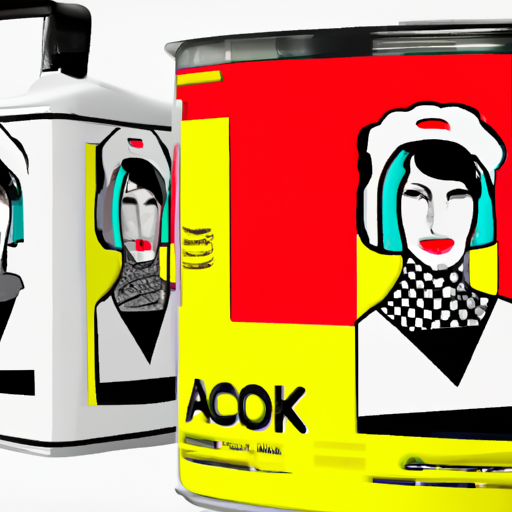
-
Table of Contents
- Package Design for Kitchen Products: Functional and Stylish
- The Power of Package Design
- 1. Clear and Informative Labeling
- 2. Functional and Protective Packaging
- 3. Aesthetically Pleasing Design
- 4. Sustainable Packaging Solutions
- Case Study: OXO Good Grips
- The Impact of Package Design on Consumer Behavior
- Key Takeaways
- Conclusion
Package Design for Kitchen Products: Functional and Stylish

When it comes to kitchen products, package design plays a crucial role in attracting consumers and influencing their purchasing decisions. A well-designed package not only protects the product but also communicates its value and functionality. In this article, we will explore the importance of functional and stylish package design for kitchen products, and how it can enhance the overall consumer experience.
The Power of Package Design
Package design is often the first point of contact between a consumer and a product. It serves as a visual representation of the brand and its values. A well-designed package can create a positive impression, build trust, and differentiate a product from its competitors. In fact, studies have shown that 64% of consumers try a new product because the package catches their eye.
For kitchen products, package design goes beyond aesthetics. It needs to be functional, informative, and able to withstand the demands of a kitchen environment. Let’s explore the key elements of package design that make it both functional and stylish.
1. Clear and Informative Labeling
One of the primary functions of package design is to provide consumers with essential information about the product. Clear and informative labeling is crucial for kitchen products, as it helps consumers make informed decisions about their purchase. The label should include the product name, brand logo, key features, usage instructions, and any necessary warnings or precautions.
For example, a package design for a blender should clearly indicate its power, capacity, and the types of food it can blend. Including icons or symbols can also be helpful in conveying information quickly and efficiently. A well-designed label not only enhances the overall package aesthetics but also ensures that consumers have all the necessary information at their fingertips.
2. Functional and Protective Packaging
Kitchen products often require packaging that is not only visually appealing but also functional and protective. The packaging should be designed to withstand the rigors of transportation and storage, ensuring that the product reaches the consumer in perfect condition.
For example, a package design for a set of knives should include individual slots or compartments to securely hold each knife, preventing them from getting damaged or causing injuries. Additionally, the packaging should be made from durable materials that can withstand moisture, heat, and other kitchen-related factors.
Furthermore, functional packaging can also enhance the overall user experience. For instance, a package design for a spice rack could include a rotating mechanism that allows easy access to different spices, making cooking more convenient and enjoyable for the consumer.
3. Aesthetically Pleasing Design
While functionality is crucial, the package design for kitchen products should also be aesthetically pleasing. A visually appealing package can capture the attention of consumers and create a positive emotional response. It should reflect the brand’s identity and resonate with the target audience.
For example, a package design for a high-end coffee machine could incorporate sleek lines, metallic accents, and a minimalist color palette to convey a sense of luxury and sophistication. On the other hand, a package design for a playful and colorful set of baking utensils could feature vibrant illustrations and bold typography to appeal to a younger demographic.
Moreover, the use of high-quality materials, such as embossed logos or matte finishes, can elevate the perceived value of the product. A well-executed package design not only attracts consumers but also communicates the quality and craftsmanship of the product inside.
4. Sustainable Packaging Solutions
In today’s environmentally conscious world, sustainable packaging solutions are gaining increasing importance. Consumers are actively seeking products that are packaged in eco-friendly materials and are mindful of their environmental impact.
Package design for kitchen products should consider sustainable alternatives, such as using recyclable or biodegradable materials. For example, a package design for a set of reusable silicone food storage bags could use packaging made from recycled cardboard or plant-based plastics.
Additionally, reducing the overall packaging size and weight can also contribute to sustainability efforts by minimizing waste and reducing transportation emissions. A well-designed package should strike a balance between functionality, aesthetics, and sustainability.
Case Study: OXO Good Grips
A notable example of a brand that excels in package design for kitchen products is OXO Good Grips. OXO’s package designs are known for their combination of functionality, style, and user-friendliness.
One of their most successful package designs is for their line of kitchen utensils. The packaging features a clear plastic window that allows consumers to see and feel the product before making a purchase. The label includes detailed information about the product’s features, materials, and usage instructions.
Furthermore, OXO’s package design incorporates a unique feature called “Try Me” that allows consumers to interact with the product in-store. This feature enhances the overall consumer experience and builds trust in the brand’s commitment to quality and functionality.
The Impact of Package Design on Consumer Behavior
Package design has a significant impact on consumer behavior and purchasing decisions. According to a study conducted by Nielsen, 52% of consumers say that they are more likely to purchase a product if it has premium packaging.
Furthermore, package design can influence brand perception and loyalty. A well-designed package can create a positive emotional connection with the consumer, leading to repeat purchases and brand advocacy. On the other hand, a poorly designed package can result in negative associations and deter potential customers.
Key Takeaways
- Package design for kitchen products should be both functional and stylish.
- Clear and informative labeling is crucial to help consumers make informed decisions.
- Functional and protective packaging ensures that the product reaches the consumer in perfect condition.
- Aesthetically pleasing design captures the attention of consumers and reflects the brand’s identity.
- Sustainable packaging solutions are gaining importance in today’s environmentally conscious world.
- Package design has a significant impact on consumer behavior and purchasing decisions.
Conclusion
Package design for kitchen products is a powerful tool that can attract consumers, communicate product value, and enhance the overall consumer experience. By incorporating clear and informative labeling, functional and protective packaging, aesthetically pleasing design, and sustainable solutions, brands can create packages that stand out on the shelves and resonate with their target audience. Understanding the impact of package design on consumer behavior is crucial for brands looking to succeed in the competitive kitchen products market. By investing in thoughtful and well-executed package design, brands can differentiate themselves, build trust, and ultimately drive sales.
